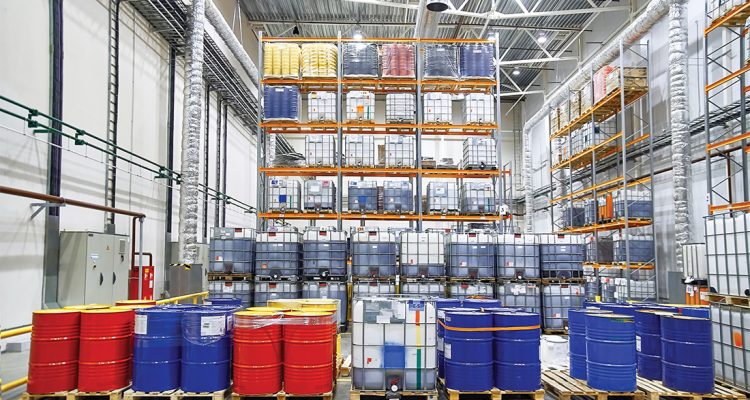Almost every industrial business needs to keep lubricants onsite, but this requirement also comes with a challenge. If not stored or handled properly, lubricants can create significant health, safety, and environmental hazards.
In this article, Steve Keown – Motion’s National Product Manager for Lubricants – discusses six strategies readers can employ as best practices for handling and storing lubricants safely in the workplace.
1. Be smart about inventory
Industrial sites often have a large range of lubricants stored for different applications, such as hydraulic oils, diesel engine oils, gear oils, compressor oils and grease. Each lubricant has different properties and technical characteristics. If the wrong lubricant is used in an application, it may not only damage equipment, but create a workplace hazard.
Which is why keeping a detailed inventory that includes all product and safety data sheets is critical. The inventory serves to inform staff of what lubrications are in store, what they are used for, and what risks they may pose. It also assists with stock-rotation – ensuring that lubricants are stored for extended periods of time and that older product is used before freshly ordered stock.
2. Get colourful with labelling
To complement an inventory register, all lubricant storage containers should be labelled clearly with the name of the lubricant they contain. Steve further recommends colour coding as a foolproof identification tool to avoid mixing lubricants.
“Allocate the same colour to a lubricant storage container, dispensing equipment and the point of fill to prevent incorrect product being used.”
3. Optimise storage conditions
Lubricants need to be kept in a stable environment where they are not exposed to fluctuating temperature conditions or contamination such as moisture ingress. Keeping drums under cover in a temperature controlled store area is therefore preferable.
4. Contain and seal it right
It’s also important to store and transfer lubricants in the right containers and trays. In workplaces where regular access to lubricants in large quantities is needed, it’s worth considering an intermediate bulk container (IBC) as this can be linked to pumping equipment. This will make the dispensing more efficient, but more importantly, can reduce the risk of spills, injuries from manual handling and product contamination. Whether lubricants are stored in IBCs or drums, Steve says they should be kept on self-bunded spill storage trays or in a fully-bunded containment area for best safety practice.
In addition to the above, capped funnels, oil measures and sealed lubricant delivery containers makes the storage and decanting of lubricants easy whilst increasing site safety. Similarly, mobile drum trolleys with built in pumps, hose reels and metered delivery nozzles facilitate the safe storage and movement of lubricants to specific locations.
5. Keep a spill kit
Having a quick response mobile lubricant spill containment kit
available on site is a must, as is adequate onsite training to how to use these when required.
6. Comply with AS1940
The purpose of the Australian Standard AS1940 is to provide guidelines around the safe storage and handling of flammable and combustible liquids and minimise the incidence of spills and leakages.
To help industrial businesses achieve best safety practices with lubrication as outlined in the strategies above, Steve says readers can access end-to-end solutions and training through Motion’s partner Viva Energy Australia.
“At Motion we work with partners such as Viva Energy Australia to not only supply lubrication solutions to industrial businesses across Australia, but to help businesses achieve a goal of ‘zero harm’ where there is no harm to people or the environment. This is a common aim that we share,” concludes Steve.

